Masoud Najar has been hard at work in his tiny blue wooden kiosk since 4 am when I arrive to speak to him on a bitingly cold morning last week. Tucked away on the south-east corner of St Giles, between the trees fronting the gateway to St John’s College and a motorcycle parking lot, he’s been preparing for the students’ first week back in Oxford, he tells me. For that’s when he starts to get really busy. There are sacks of chickpeas to boil until they are soft and easy to mash for hummus; there’s garlic, mint and parsley to chop for tabbouleh; there’s falafel to shape into oval balls for frying: everything freshly prepared for the long hungry queues that can sometimes snake from here south as far as the Martyrs’ Memorial. Even the near horizontal rain that came later in the day as Storm Eowyn approached didn’t seem to put people off. For Najar’s Place – or Najar’s Palace as it is affectionately known if ironically as it is far from palatial – celebrating its 21st year of serving takeaways from under its azure awning, is these days attracting something of a cult following. You can even get the T shirt.
It seems apt that Masoud and his team are still doling out warmth and comfort from a structure that was designed for this very purpose almost 150 years ago. For these old timber shelters, of which there were three built in Oxford (St Giles, Broad Street and Park Town) were erected to provide an escape from the elements for the Victorian cabbie. Cabs (from the French word ‘cabriolet’) at the time were single-horse, two-wheeled hackney carriages with an exposed seat at the top rear on which the driver was expected to sit, braving all weathers, while they waited for a fare. If that was wanting, they’d more than likely hand over the horse (it was illegal to leave them unattended) to the supervision of a small boy and retire to the pub – the Eagle and Child, the Lamb and Flag, there were plenty in those days to choose from. But after a few pints they were not always easily extricated. The cabman’s shelters provided a cosy alternative. A place to stay out of the cold for the cabbies, and as alcohol was prohibited, a means of keeping them sober for their passengers to ride home safely. Everyone was happy.
The shelter in St Giles was erected in 1876 (Najar’s Palace occupies its replacement built 20 years later so is still over 120 years old) and is the only one of the three in Oxford that still survives. It was in its heyday painted a trademark green like its London relations (of which just 13 of the 60 built in the capital remain today) equipped with a table, lockers, a sink with running water and a simple stove for making hot snacks, as well as a stock of newspapers and books. Confined to a space no larger than that occupied by a horse and cab, it could seat up to 10 men.
Tardis like it has moved around since it was first positioned up on the fork of the Banbury and Woodstock Roads, then slap bang in the middle of the highway alongside the men’s public lavatories built in 1895 (now no longer but that’s another story) before finally settling off the road away from the main traffic. This is where it has always stood in my living memory, the booking office for the St Giles Taxi Rank during my teenage years a welcome late-night means of getting home, it housed a flower shop for a short while, before Masoud took over.
It’s extraordinary to see what is achieved in such a tight space – Masoud and his team navigating the area, taking orders, scooping, cutting, frying, filling, it’s like a tightly choreographed ballet. Every so often a van will arrive, there will be an exchange of Arabic while exotic supplies from London are offloaded, and space will be found on the tightly packed shelving above the main serving area for the new stock.
But Masoud insists there is always time to chat. Emptying one of the newly delivered carboard boxes, and then pulling it apart he lays the outer side carefully on the kerbside, brushes it down and there we sit side by side facing away from the traffic and towards the honey-coloured walls of the old city. And he tells me his story.
“I came to England in 2002 when I was 25. I’m from the Kurdish area of Syria. Our people live in the mountains. It is very beautiful there, but the system was very corrupt, and it was difficult to make a living. My father worked in Germany and told us about the kind of freedoms enjoyed in Europe. My two older brothers were already in London. My sister lives in Holland. Most of my family are now in Europe. I always thought this was where I wanted to come.
I was working in a restaurant back home and when I came here that was all I knew. The Kurdish people are very adaptable. They love music and dance and food. I do too. But I really love food.
I took over this place in 2004. It was very messy because it had been empty for some years. I had to completely redo it. But look around – the centre of Oxford is a very nice place. Every day I am here in the middle of all this beauty.
In the beginning it was hard. It was dead. At first, we used to do baguettes and panini. People didn’t know what a falafel was. We tried opening at night but all anybody wanted was burger and chips.
Now everybody knows us.
The people who work for me have all had difficult backgrounds. They make their way to us through friends and family. Ali is from Aleppo. He came here after the war. I have two boys from Sudan as well who help. Arabic is the common language in the middle east so we can all communicate. But I speak lots of languages. And I am trying to educate myself as much as time allows.
I meet lots of different people. I like that. Some are regulars and have been coming from the very beginning. Local builders drop in for breakfast, people from the nearby colleges and museums, it’s very nice. There’s a professor who deals in particle physics has been a customer for years. Our families are now friends. We meet and we eat together and then we can discuss what is going on in the world. I like to talk about things.”
And with that he heads back into the maelstrom of stuffed vine leaves, spicy potatoes and baba ganoush. I order a flatbread filled with falafel, hummus, grilled halloumi and salad. The price is a bargain £4.50, no more than an M&S sandwich and way more tasty. It may be very different fare to that served to the Victorian cabbie, but it is no less delicious for that. And a wonderfully warm antidote to the bitter January weather.
Masoud says he is forever grateful for what this country has given him. “I was a young man when I came. I got a visa, had a family and decided to stay.”
I am so pleased that he did.
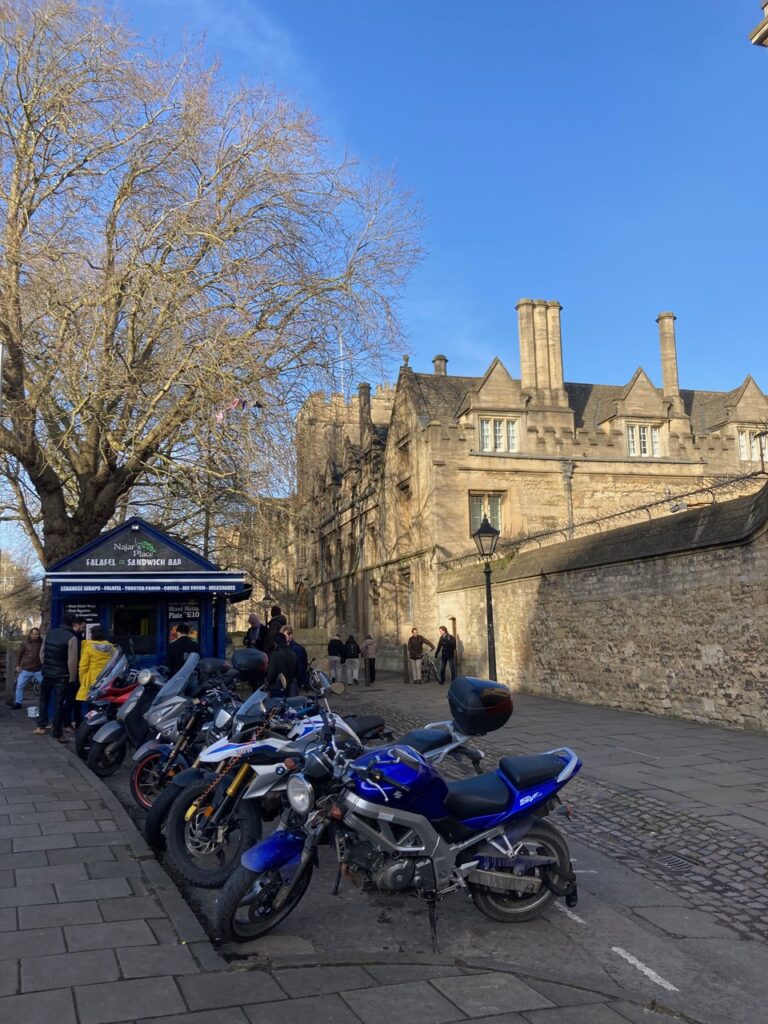
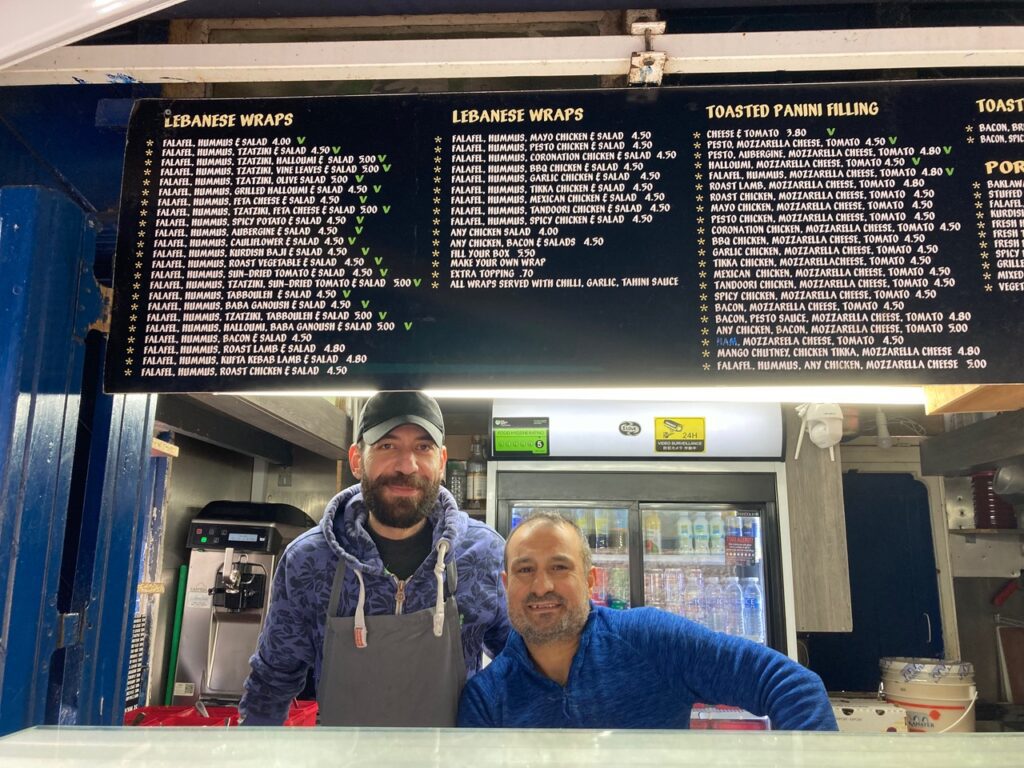
Masoud and Ali
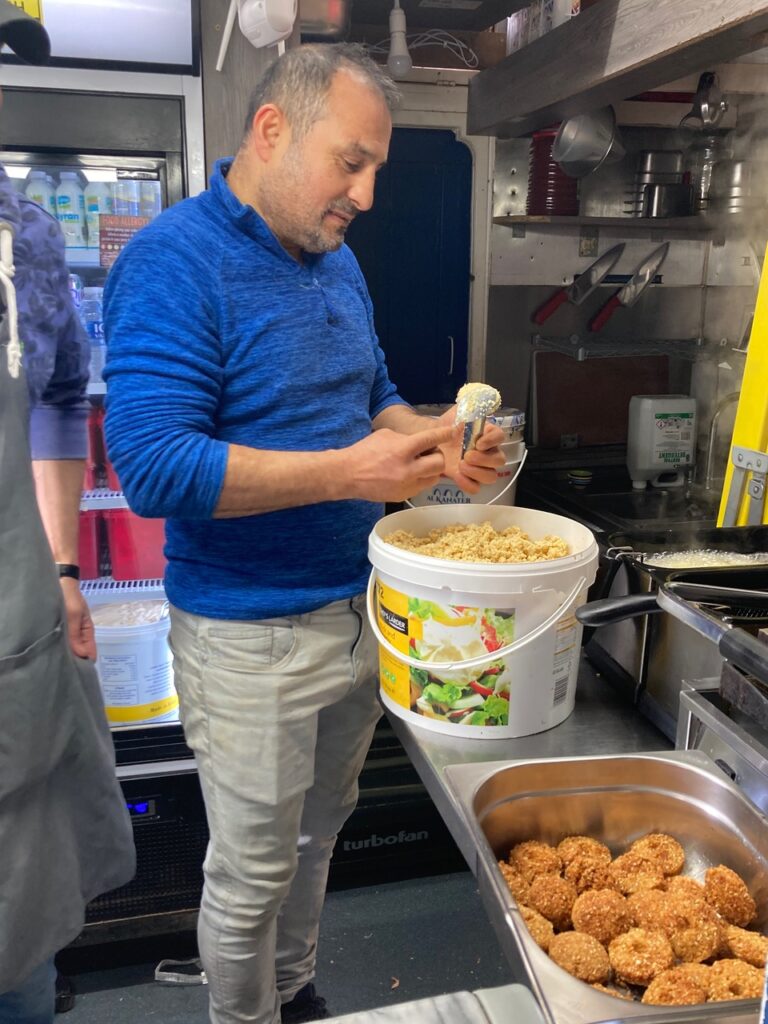
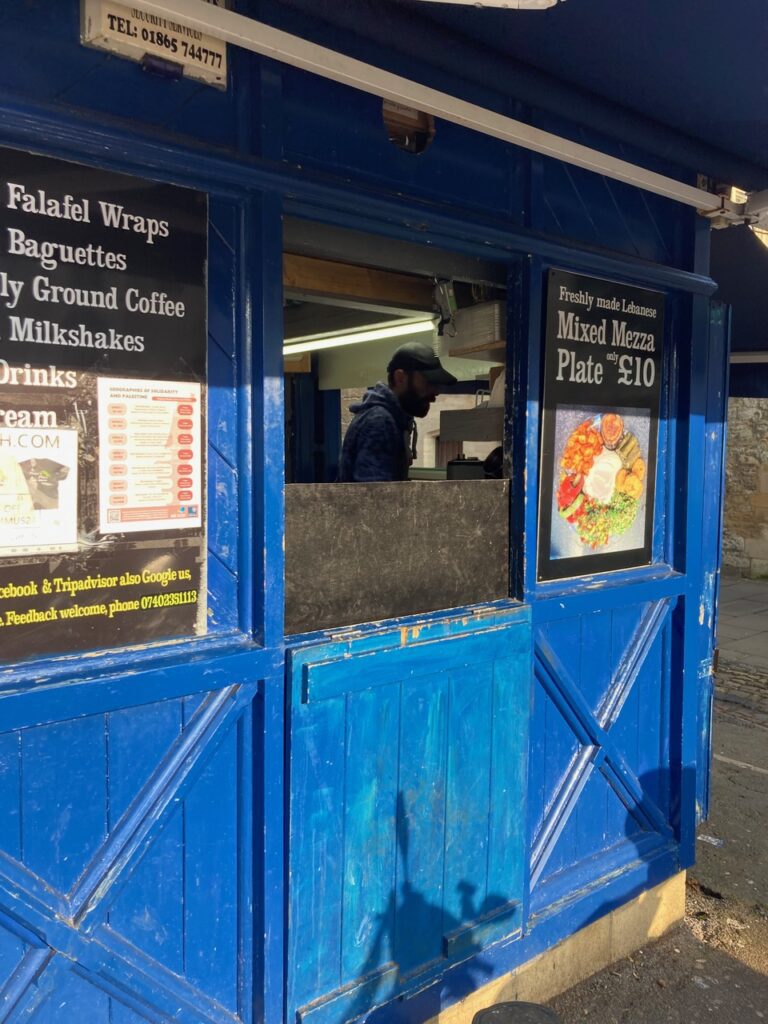
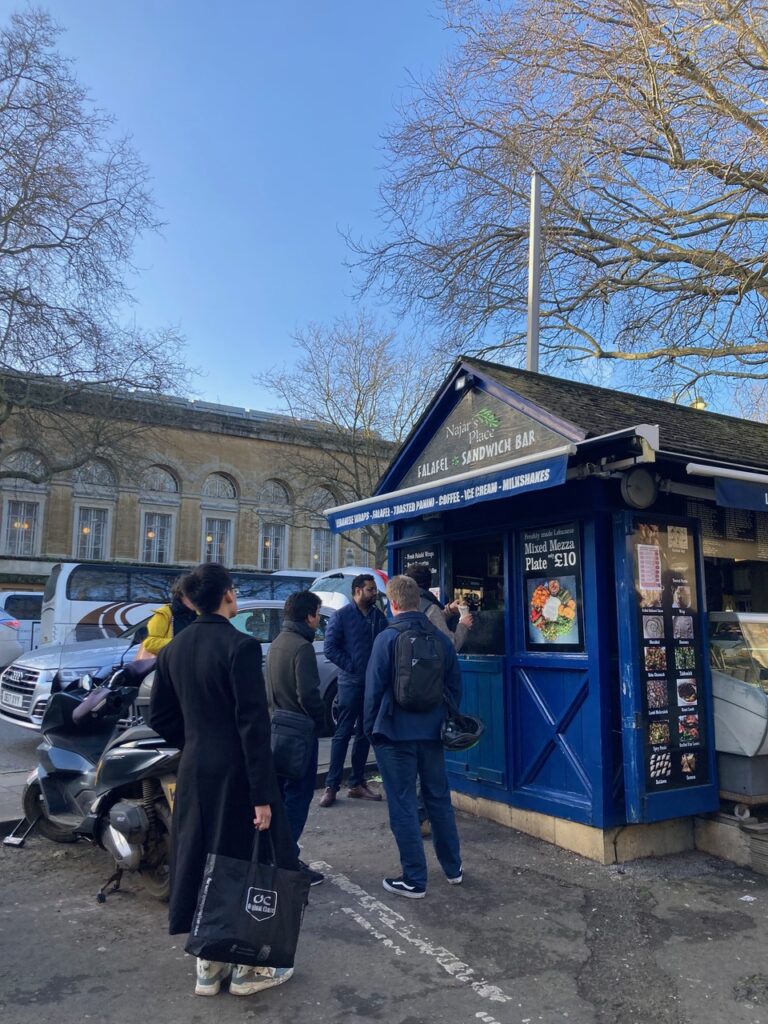
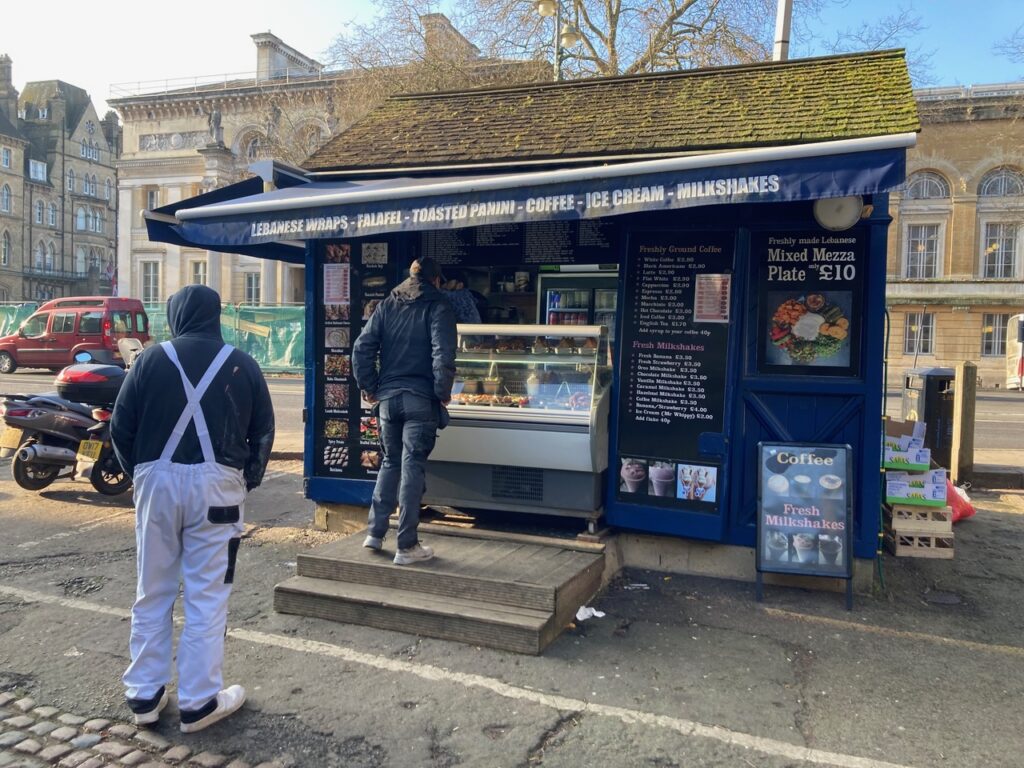
Open for breakfast..
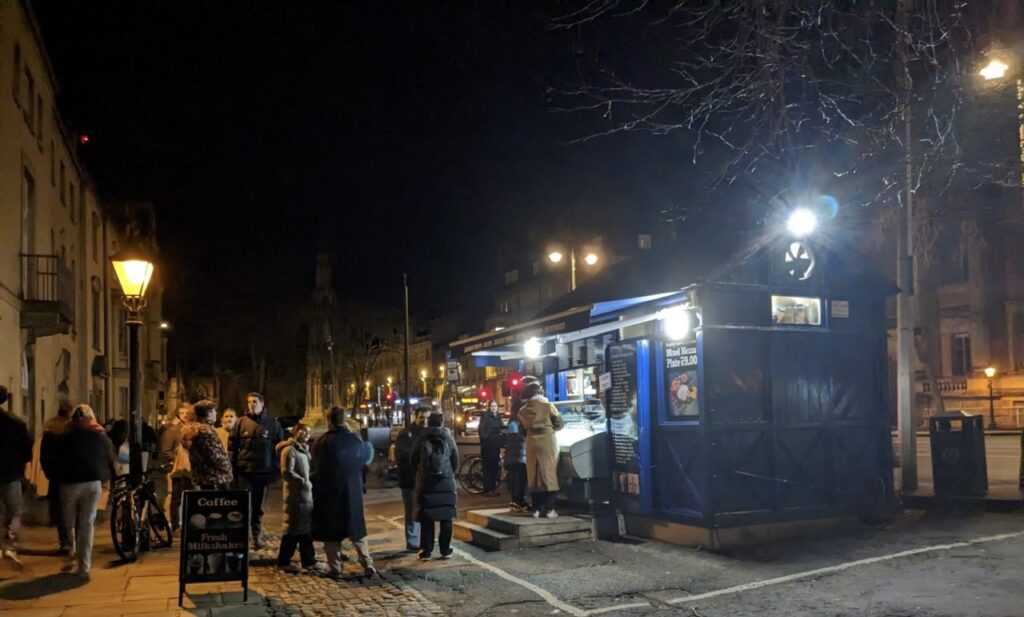
And late night queues. (Photo courtesy of Hal Cooper)
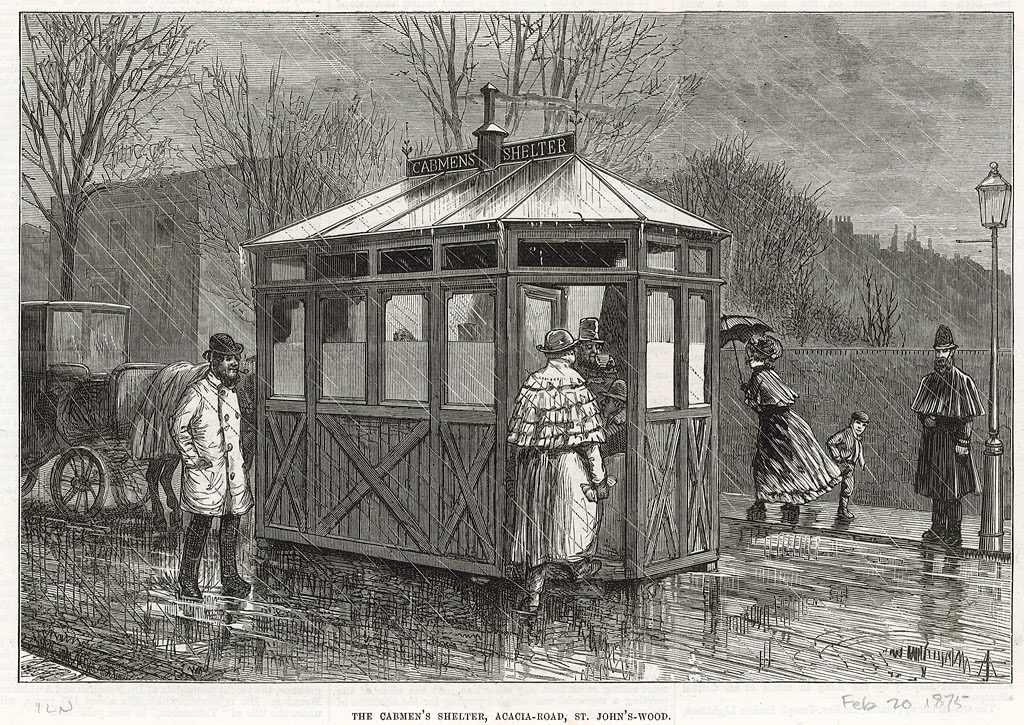
A London cabman’s shelter 1875

Detail from a postcard owned by Stephanie Jenkins of the St Giles shelter in around 1915 when it stood between what were then the men’s public lavatories and the Martyr’s Memorial. You can just see the track for the horse drawn trams on the right.
You can find more about the old cabmen’s shelters in Oxford on her website.
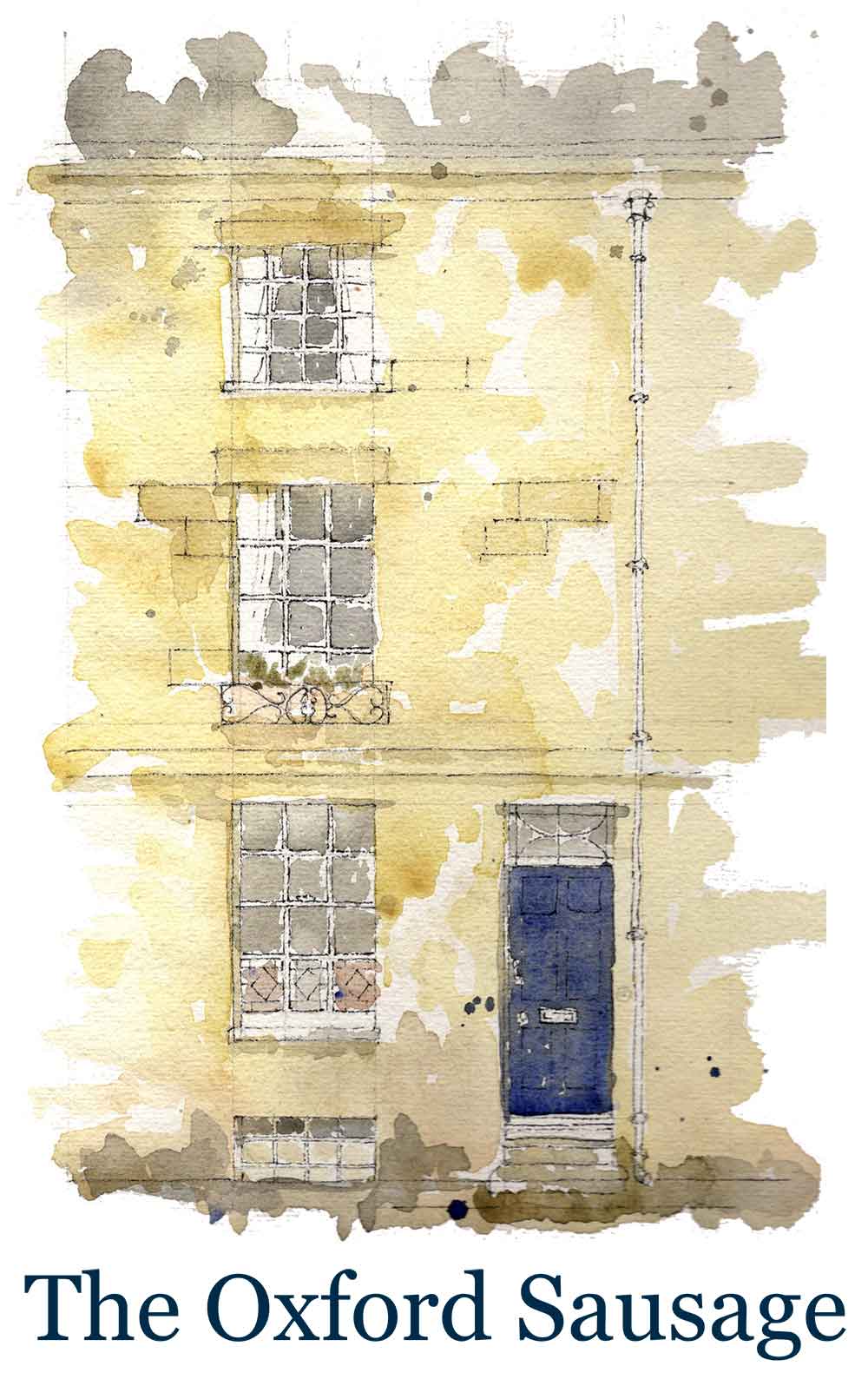
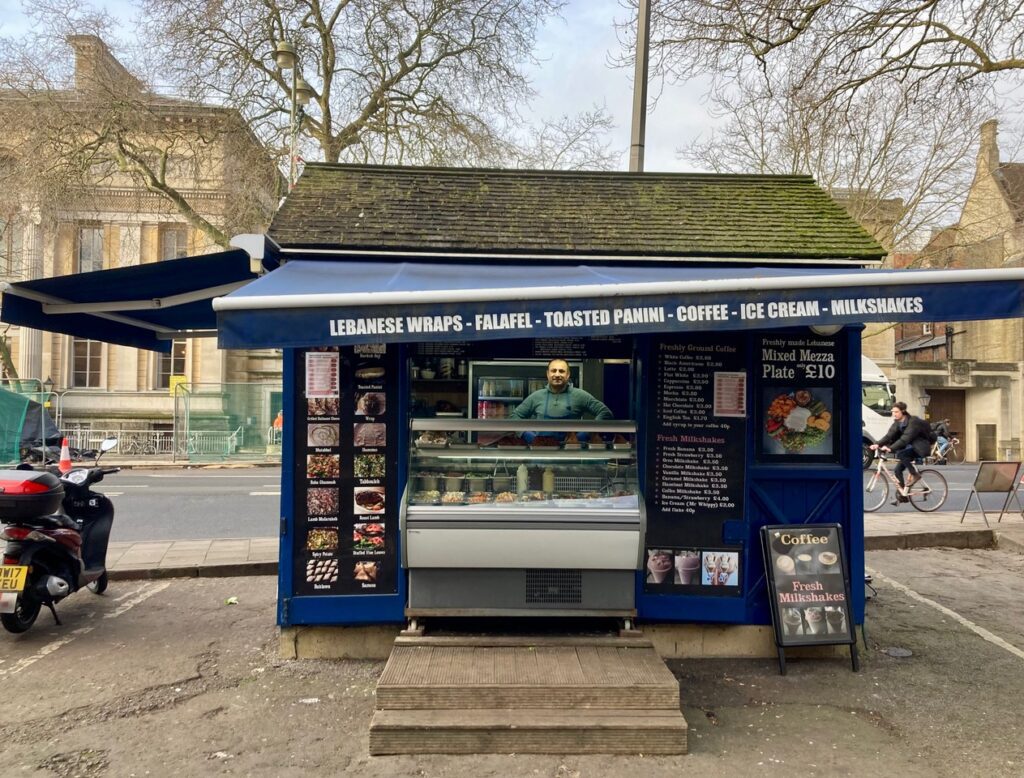
9 Comments
Join the discussion and tell us your opinion.
Fascinating and interesting- thank you.
Thank you so much for your sausage posts. I just love the extra stories round items that are part of the local scene, in particular today’s about Najar’s Palace. I shall think differently about it now every time I pass it on my bike.
Always wonders what was in the blue hut
Fab
A smashing success story — a Victorian cabbie shelter kept in good working order and Masoud, a great addition to the Oxford community. A brilliant combination of old traditions revived and expanded thanks to our new fellow citizens. And meal options! Just reading this post makes my mouth water. Thank you!
I’ve just read this week’s interesting article.
I found this fantastic.
I used to pass this every day on my way to work.
I love the history of Oxford.
Fascinating history old and new! I love how you make us see familiar places with new eyes.
Oxford Sausages always filled with the ordinary and overlooked seasoned into the extraordinary. Brilliant as always. Thanks.
Thank you for showing us what we don’t always see in Oxford
I recall seeing this place, last time I visited Oxford. I will invariably give it a try however, Taylor’s baguettes are hard to resist!